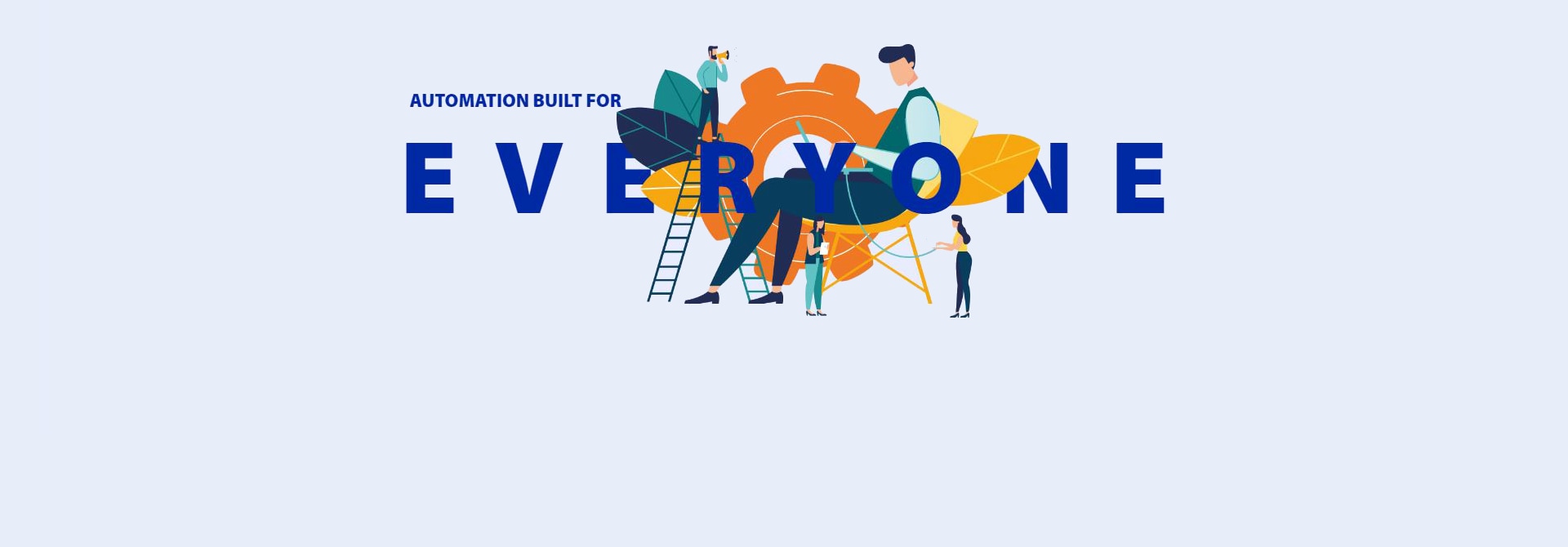Home > AssistEdge > Blogs > Evaluating the role of low-code, no-code applications in end-to-end process automation
Evaluating the role of low-code, no-code applications in end-to-end process automation

Digital transformation is a need of the hour, and automation is the key. Many reports suggest that nearly 37% of enterprises surveyed are stepping up efforts to bring automation into their existing workflows1. Yet, total digital transformation requiring end-to-end business process automation continues to remain a distant dream for many. Hence, data silos deter seamless transformations. Automation is intricate and requires relevant skills; not anymore. With low-code-no-code automation, businesses can still build and automate existing workflows without coding skills or experience.
Low-code-no-code platforms are leveraged to create app-lets or little applications to accommodate human-machine interactions without needing a custom web app. And connecting humans and machines can make automation far more capable.
What are low-code-no-code platforms?
Low-code automation is a software solution that enables businesses to build and automate existing processes and workflows by minimizing the use of codes for automation. A visual interface is used to access features and make changes. It speeds up automation development cycles.
Contrarily, no-code is more of a no-code automation approach where a prior understanding of coding is not needed to efficiently and quickly build applications.
Both are leveraged to scale the enterprise automation journey.
Benefits of low-code-no-code automation:
Low-code-no-code automation is increasingly important in the current digital landscape. They counteract the present shortage of IT specialists in automating existing processes effectively. Each department can easily take up the responsibility without relying too much on expert coders.
There are other benefits attached to such applications, such as:
How does a low-code-no-code application support end-to-end process automation?
Low-code-no-code allows enterprises to build automation quickly and gradually scale their growth across more complex areas and workflows.
It offers citizen developer-friendly tools, empowering every employee with contextual guidance to democratize automation. Hence, this enables automation footprint by over 70%2. Employee Personal Assistance can help empower employees to easily automate everyday tasks with contextual guidance, manual efforts are reduced by 20%, and employee satisfaction improves by 3X or more3.
Various low-code platforms offer infinite customizations of workflows and UI/UX personalization. It is easier to create one LCNC connecting processes across the enterprise and effectively optimizes the UI/UX for specific use cases without affecting the workflow. They work in perfect sync while assuring compliance requirements are aptly met.
However, processes constantly evolve or shrink to accommodate changes to get jobs done. Such regulatory updates can limit the reuse of your codes. Hence, end-to-end LCNC applications are powered by AI and ML capabilities to allow cross-channel applications, process improvements, and scale automation growth from a single platform. Such platforms can easily integrate all types of data sets, sources, and core systems.
For example, one of AssistEdge’s clients, one of the oldest communications companies, accelerated its plans for scale after implementing AssistEdge Engage.
The market leader in communications focused on providing exceptional customer experience struggled to increase efficiency to scale its business operations. Having operation spread across multiple locations, the company suffered from inefficient service delivery. This became a hindrance when the client sought to scale operations on the back of legacy architecture. Executives had to multitask at speed while searching for information on multiple apps during a customer conversation over chat or the phone. This resulted in inaccuracy and, consequently, a poor customer experience. The system relied on experienced agents, which eventually impacted productivity and quality.
With the help of EdgeVerve’s AssistEdge Engage, a low-code orchestrator, the client could reduce agent dependency on subject matter experts. Further, process bottlenecks were successfully eliminated that impaired productivity. And the client built on a stellar legacy of customer success and innovation with the help of EdgeVerve’s end-to-end low-code solution.
Low-code-no-code platforms foster end-to-end process automation
LCNC platforms are emerging as essential catalysts for enterprises looking to expand their digital capabilities effectively. However, enterprises need to ensure that LCNC platforms align with their core branding strategy to fast-track success and create customer value. And, it remains to be seen how LCNC will adapt to further changes in the near future while democratizing process automation and its capabilities.


Possibilities Unlimited
Possibilities Unlimited
Inspiring enterprises with the power of digital platforms
More blogs from EdgeVerve →